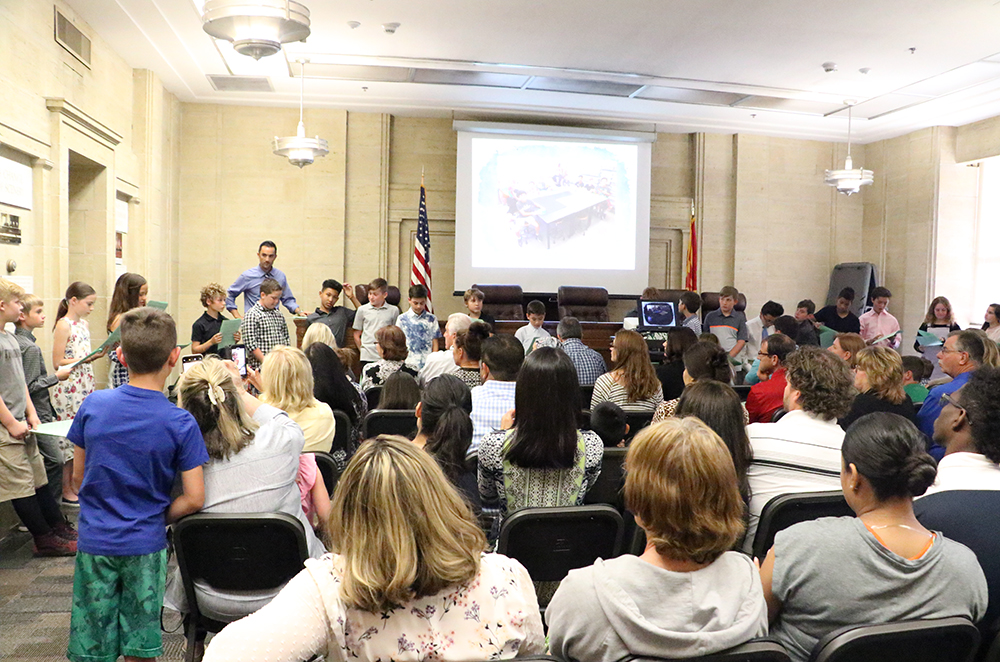Over the summer, I wrestled with this question: if schools exist to prepare students for the outside world, why do most schools look so different from it?
At Summit we are continuing to connect school to the world in order to deepen students’ capacity for learning and better equip them for life in the world they’ll one day inherit.
Summit’s next step this year is to academically dig deeper by combining core content mastery, 21st century skill development, and creative problem solving. As more schools across the country adopt what has been Summit’s longstanding approach, the term deeper learning is now commonly used. Cultivating our students’ ability to apply learning from one setting to another in order to solve problems is an example of the deeper learning that has been practiced at Summit for years.
What does this deeper learning look like in practice? Here are two examples:
As one school in a state that cut funds for water testing, Summit students took up a “Media Saves the Beach” project. Students extended water testing experiments in their science classes by collaborating with two outside organizations. They found the best locations to conduct additional tests for bacteria on the beach. With their testing completed, students wrote articles sharing their findings, which were published in local newsletters, on their collaborators’ websites, and even created documentary videos.
At Summit School, fifth graders took on the challenge of designing a student-friendly and educational visit to Wesley Bolin Plaza at the Arizona State Capitol. Summit teachers Kelly Makay, Tom Pray, and Kathleen Kupper, partnered with subject experts (an Arizona historian, ASU graduate student, and an Arizona State Senator) for this applied learning. Students studied eighteen different monuments and their historical context, considered public art’s role in an urban space, and applied their learning to create a “Lost in the Park Audio Tour.” The Arizona Capitol Museum published the tour in their statewide teacher resource packet and the tour is featured on a sign inside the capitol rotunda.
While these kinds of learning experiences are stimulating for students, what kind of academic outcomes do they support?
According to recent studies, students in schools that practice deeper learning:
- Scored higher on tests assessing core content knowledge and complex problem-solving skills, mathematics and English language arts
- Demonstrated stronger social skills like academic engagement, collaboration, and motivation to learn
- Enrolled in four-year colleges at higher rates
Also striking is that these outcomes were consistent for students across a wide range of backgrounds and prior academic achievement levels. A broad range of students stand to benefit from deeper learning, not just previously high achieving students.
As educators and parents, we want our students to be happy, smart, kind, and demonstrate exceptional character. During the 2019-20 school year, look forward to hearing much more from us about the deeper, rigorous, enjoyable learning experiences ahead.
Go Sabrecats,
Mark
References:
Alliance for Excellent Education. (2011) A Time for Deeper Learning: Preparing Students for a Changing World Retrieved from https://all4ed.org/wp-content/uploads/2013/06/DeeperLearning.pdf
Education Policy Center at American Institutes for Research (2015) Deeper Learning: Improving Student Outcomes for College, Career, and Civic Life. Retrieved from https://www.air.org/resource/deeper-learning-improving-student-outcomes-college-career-and-civic-life
Lichtman, Grant. Moving the Rock: Seven Levers We Can Press to Transform Education (2017) Jossey-Bass
*Science, Technology, Engineering, the Arts, Mathematics

